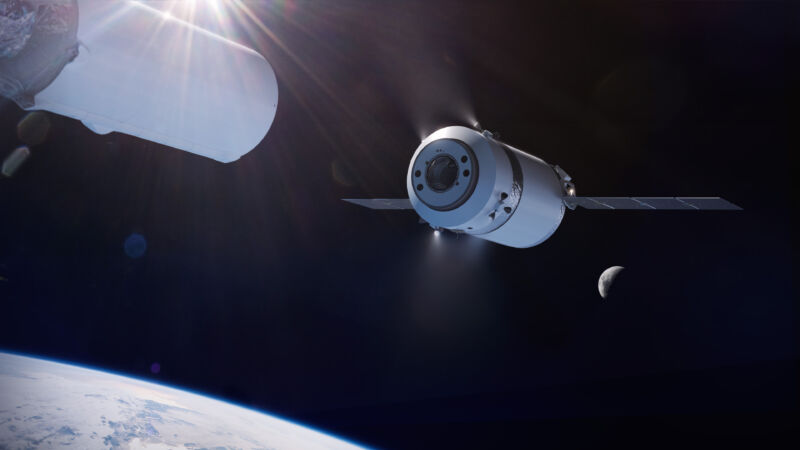
SpaceX
NASA has awarded an $843 million contract to SpaceX to develop a “US Deorbit Vehicle.” This spacecraft will dock to the International Space Station in 2029 and then ensure the large facility makes a controlled reentry through Earth’s atmosphere before splashing into the ocean in 2030.
“Selecting a US Deorbit Vehicle for the International Space Station will help NASA and its international partners ensure a safe and responsible transition in low Earth orbit at the end of station operations,” said Ken Bowersox, NASA’s associate administrator for Space Operations, in a statement. “This decision also supports NASA’s plans for future commercial destinations and allows for the continued use of space near Earth.”
NASA has a couple of reasons for bringing the space station’s life to a close in 2030. Foremost among these is that the station is aging. Parts of it are now a quarter of a century old. There are cracks on the Russian segment of the space station that are spreading. Although the station could likely be maintained beyond 2030, it would require increasing amounts of crew time to keep flying the station safely.
Additionally, NASA is seeking to foster a commercial economy in low-Earth orbit. To that end, it is working with several private companies to develop commercial space stations that would be able to house NASA astronauts, as well as those from other countries and private citizens, by or before 2030. By setting an end date for the station’s lifetime and sticking with it, NASA can help those private companies raise money from investors.
Do we have to sink the station?
The station, the largest object humans have ever constructed in space, is too large to allow it to make an uncontrolled return to Earth. It has a mass of 450 metric tons and is about the size of an American football field. The threat to human life and property is too great. Hence the need for a deorbit vehicle.
The space agency considered alternatives to splashing the station down into a remote area of an ocean. One option involved moving the station into a stable parking orbit at 40,000 km above Earth, above geostationary orbit. However, the agency said this would require 3,900 m/s of delta-V, compared to the approximately 47 m/s of delta-V needed to deorbit the station. In terms of propellant, NASA estimated moving to a higher orbit would require 900 metric tons, or the equivalent of 150 to 250 cargo supply vehicles.
NASA also considered partially disassembling the station before its reentry but found this would be much more complex and risky than a controlled deorbit that kept the complex intact.
The NASA announcement did not specify what vehicle SpaceX would use to perform the deorbit burn, but we can draw some clues from the public documents for the contract procurement. For example, NASA will select a rocket for the mission at a later date, but probably no later than 2026. This would support a launch date in 2029, to have the deorbit vehicle docked to the station one year before the planned reentry.
